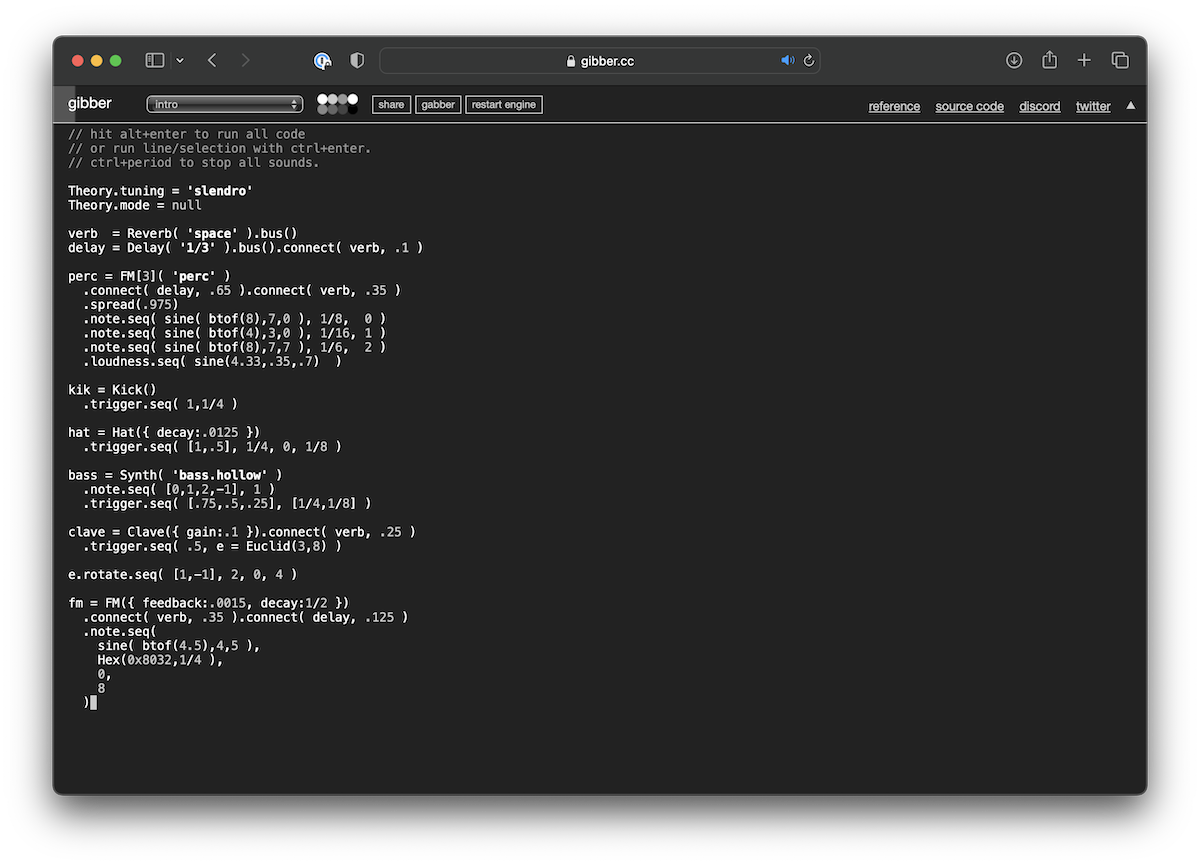COMP4350/8350
Sound and Music Computing
A brief guide to live coding music
Dr Charles Martin
Country of the Ngunnawal and Ngambri People
Charles Martin
Senior Lecturer, ANU School of Computing
computer musician, percussionist
Sound and Music Computing
two big goals:
-
make sound with code on laptop computers
-
play computer music in a group
…how do we do this at ANU?
how does this work?
-
get logged in on your computer (need temporary user ID and password)
-
open “Chromium” web browser
-
go to https://bit.ly/laptop-music-coding for the workshop instructions
-
go to https://gibber.cc to start coding music
see these slides: https://bit.ly/coding-music-slides
⚠️⚠️ the lab computers use an operating system called linux that you might not be familiar with! You might need help finding Chromium and the volume control. ⚠️⚠️
Gibber

Free tool for making computer music—in your web browser.
Developed by Charlie Roberts. “New” (circa 2013), under active development.
Start using it at gibber.cc.
coding to make sound
who has a question right now?
Later… so you’ve made a piece in Gibber…
-
Dive deeper into the synth designs provided in Gibber (well, in gibberish actually, see below). Create sounds with a synth you haven’t used before such as
fmorkarplusstrong. -
Read through the
modulationtutorial and thearpeggios and signals as sequencestutorial and learn about how to create custom modulations for synth parameters and sequences. -
Look at the
making synthstutorial and create your own synth design in Gibber using the Genish DSP library. -
Try the
tidalcyclestutorial for a different (some would say better) way of defining sequences in Gibber. The full syntax for tidalcycles mininotation is here. -
Use Gibber’s built-in collaboration features to create a group performance with your ensemble!
Much later… music and code resources
- ANU Sound and Music Computing student performances.
- The gibber playground: Gibber’s user interface, clone this repo to run Gibber locally.
-
gibber.audio.lib: Audio components for Gibber, most of this wraps
gibberish(see below), but it does include the presets. - gibber.graphics.lib: Graphics components for Gibber.
-
gibber.core.lib: A few shared objects and function for Gibber, mostly for sequencing.
euclid,seq, andtidalare defined here. -
gibberish: a “fast JavaScript DSP library”. If you want to know where
SynthorSamplerare defined, look here (actually look ingibberish/js/instruments). -
genish: this is a lower-level DSP library for doing “per-sample audio processing” (inspired by the
gen~object from Max/MSP). To understand why this is cool, look at the genish tutorial.